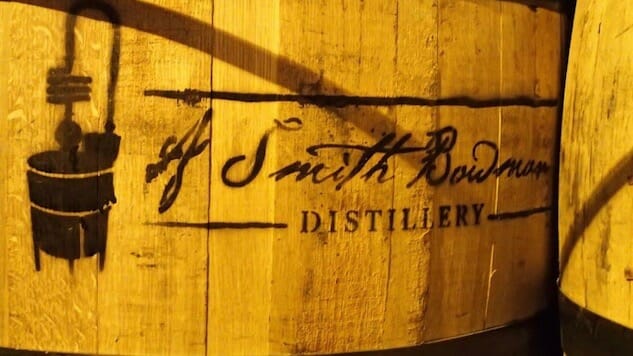You Need to Start Drinking A. Smith Bowman’s Whiskey

Does the name A. Smith Bowman ring a bell? It should, because the Virginia distillery has the history, the quality and an immediate future full of enough bright prospects to warrant serious attention. Founded in Reston, Virginia in 1934, the distillery has been at its current location in Fredericksburg since 1988. During a recent visit to the facility, master distiller Brian Prewitt sat down for a conversation.
Despite eight decades of history, the distillery remains an unknown entity to many.
“Unfortunately I think there are still a lot of people who don’t know we’re here,” admits Prewitt. But the distillery is fresh off a “World’s Best Bourbon” award nod from World Whiskies Awards, the distillery’s second in a row. Clearly, the word is getting out, and now you too can consider yourself in the know.
One factor which immediately stands out about A. Smith Bowman is their triple-distillation process for their main line of whiskeys, rare in the world of bourbon. “Really, it’s something that gives us those smooth flavor characteristics,” says Prewitt. “We’ve been triple distilling since the ‘80s. It gives a nice, smooth character, rounds it a little bit, softens it out.”
After receiving their low wines—wash which has been distilled once—from Buffalo Trace, they distil twice more on their uniquely shaped 2,000-gallon pot still dubbed Mary. “She’s our workhorse,” says Prewitt.
As far as the Buffalo Trace connection, A. Smith Bowman is under the same company roof. They were purchased by Sazerac in 2003, after previously having a production agreement with Ancient Age, also in the Sazerac portfolio.
“Then low and behold, we’re purchased by the family that owns Sazerac,” says Prewitt. “I work closely with [Buffalo Trace’s] master distiller Harlen Wheatley.”
A. Smith Bowman then enjoys the benefits of what Prewitt describes as a, “large, consistent fermentation,” process which provides the distillery with a solid starting base to use before distilling the juice two more times.
The arrangement also enables Prewitt to be more experimental. That’s something which Buffalo Trace itself is known for, but Prewitt relishes his own opportunity to do so. “We’re like the crazy guys out there,” he says. If someone has a wacky idea, he’ll volunteer for the job. “I’m like ‘hey, I’ll do it!’”
Those experiments can be found strewn about in Bowman’s two main warehouses.
“Welcome to my church of whiskey,” says Prewitt upon entering the first warehouse, jam-packed to capacity, while the second, larger warehouse is well on its way to being just as full. Peek around and find casks which have been seasoned with coffee, port, and beer, made from woods sourced from France, Hungary, and Virginia and myriad other variables.
